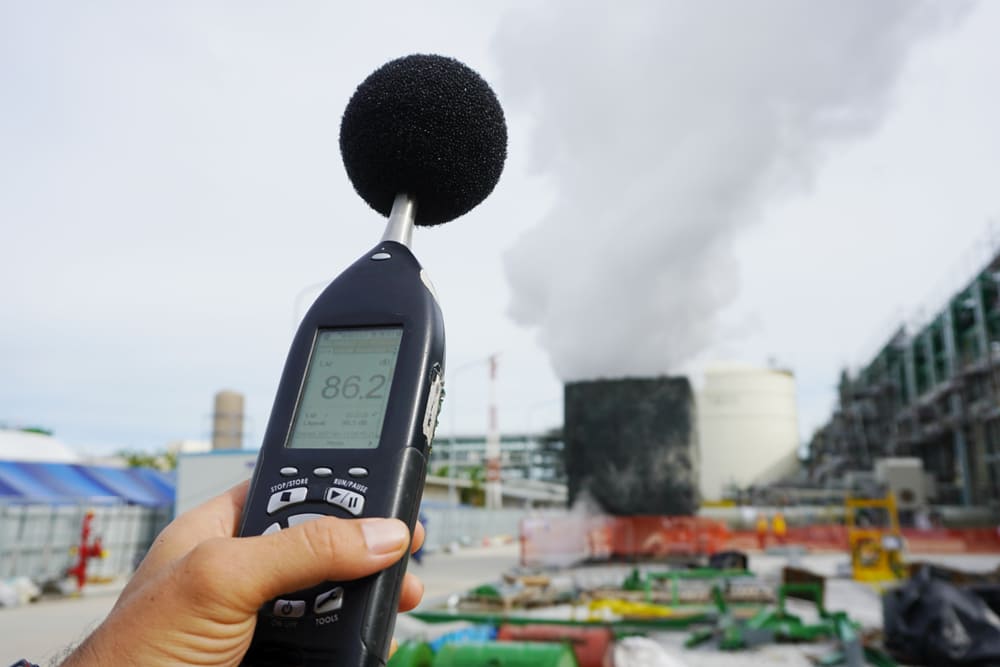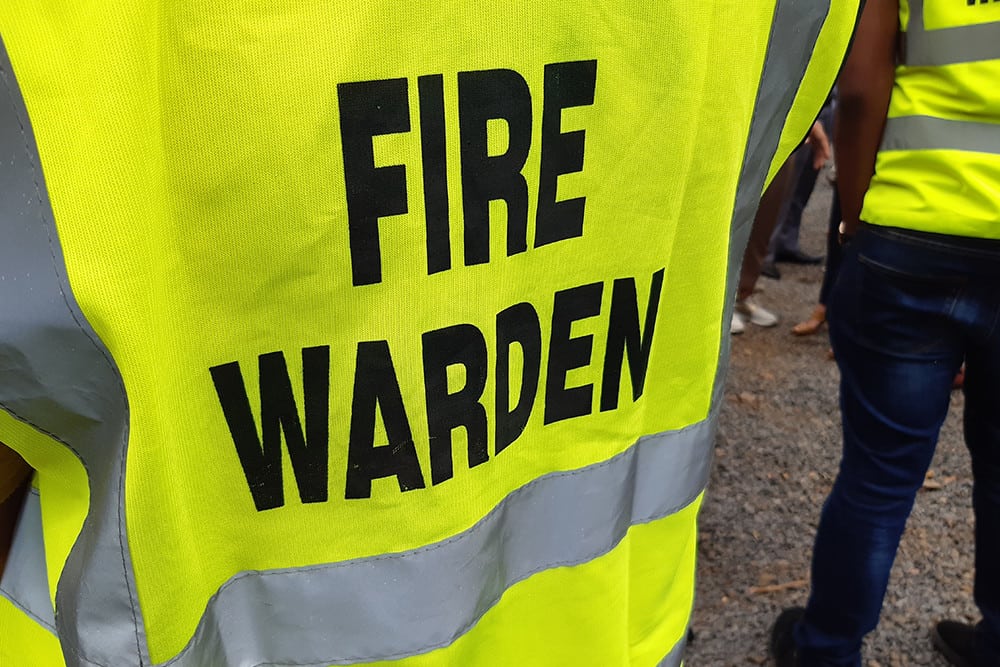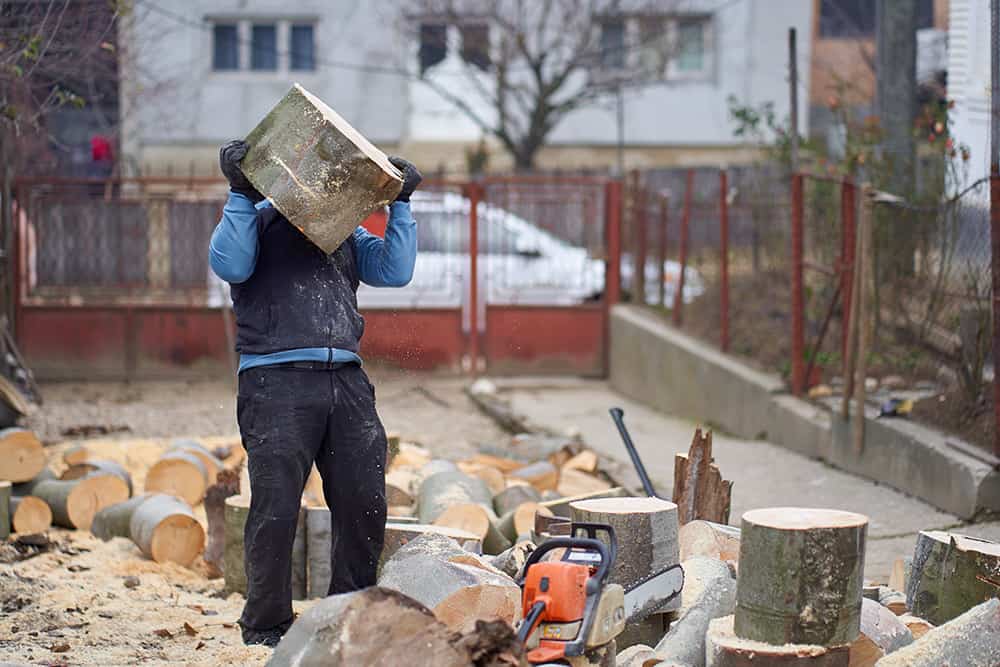
Noise pollution at work is a health risk. Prolonged exposure to excessive noise can cause permanent hearing damage, raise stress levels and reduce concentration. Like any other workplace hazard, it must be identified, assessed and controlled.
This blog explains when noise levels are considered harmful at work and what employers must do. It also highlights some of the practical measures available to reduce noise pollution and protect your employees’ health.
Key Takeaways
- Prolonged exposure to workplace noise can cause permanent hearing damage, stress and other health risks.
- Harmful effects begin at lower levels than many realise – continuous noise above 55 dB(A) can affect health.
- Employers must assess workplace noise and act when exposure reaches 80 dB(A) over an 8-hour shift.
- The most effective controls target noise at its source. Personal protective equipment (PPE) is the last resort.
- Safety training is required in noisy workplaces, so employees understand noise risks and use control measures correctly.
What Is Noise Pollution?
Noise pollution is unwanted or harmful sound that interferes with daily life and health. It’s recognised as a form of environmental pollution, with proven links to:
- Permanent hearing loss
- Tinnitus (constant ringing or buzzing in the ears)
- Stress
- High blood pressure and heart disease
- Reduced concentration
- Poor sleep
The World Health Organization (WHO) advises that long-term exposure to noise above 55 dB(A) during the day can be harmful. This is around the same volume as a typical conversation.
Many workplaces easily exceed this threshold, particularly in industries such as construction, manufacturing and logistics.
But noise pollution isn’t limited to the built environment. Workers in rural areas can also be exposed to harmful levels of noise from machinery, vehicles and agricultural equipment.
Wherever it occurs, excessive workplace noise is a health risk that needs to be managed.
Noise Risk Assessment Training
Our Noise Risk Assessment training course provides an understanding of the risk assessment process for this hazard. Having a proper understanding of noise-related risks and implementing practical measures can help control, manage and prevent this risk at work.
Noise Pollution vs. Loud Noise
When we think about harmful noise, we often imagine sudden or extremely loud sounds such as explosions, heavy drilling or machinery starting up. These are clearly dangerous and can cause immediate harm to hearing.
However, noise pollution isn’t always this obvious. Constant, lower-level noise can also cause harm over time. Sounds such as the steady hum of machinery, ventilation systems or background traffic may not feel threatening, but prolonged exposure carries risk.
You need to assess all types of workplace noise, not only those that seem uncomfortably loud.
Health Risks of Noise Pollution
Workplace noise pollution effectively creates two types of risk:
- Health effects from exposure itself
- Increased likelihood of accidents
Both must be considered when assessing and controlling noise hazards.
Direct Health Effects
The most important risk from noise pollution is permanent hearing damage.
Research shows that noises below 70 dB(A) are generally considered safe for our ears, even over extended periods. But noises above this level can cause irreparable harm to hearing.
To protect employees, the Control of Noise at Work Regulations 2005 set legal limits based on an 8-hour average exposure:
- Lower Exposure Action Value – 80 dB(A): At this level, employers must carry out a noise risk assessment, make hearing protection available and provide suitable training on the risks and control measures in place. For context, 80 dB(A) is roughly the noise level of a busy street.
- Upper Exposure Action Value – 85 dB(A): At this point, employers must actively reduce exposure, provide hearing protection zones and take all reasonable steps to ensure workers use hearing protection.
- Exposure Limit Value – 87 dB(A) (taking hearing protection into account): Noise levels above this are not permitted under law.
These limit values are averaged over a typical 8-hour shift. Brief exposure to loud noise can be balanced out by quieter periods – but the overall average must remain below the legal threshold.
The Health and Safety Executive offers free exposure calculators to help you work out when action is needed.
However, harm is still possible below the 80dB(A) threshold. Even moderate, continuous background noise – such as traffic, ventilation systems or machinery hum – can cause problems over time.
Other direct effects of noise pollution include:
- Tinnitus – persistent ringing, buzzing or humming in the ears.
- Raised stress levels – contributing to fatigue, irritability and poor mental health.
Increased Risk of Accidents
Even when noise does not directly damage health, it can still create unsafe working conditions. Key risks include:
- Distraction and reduced concentration – Workers can struggle to focus on tasks if there’s constant background noise, increasing the likelihood of mistakes and accidents.
- Communication difficulties – Verbal instructions and safety briefings are harder to follow in noisy environments.
- Missed warnings – Alarms, signals or approaching vehicles may not be heard in time.
Main Causes of Noise Pollution at Work
Workplace noise pollution comes from a range of sources. These can be divided into four main categories:
Machinery and Equipment
- Heavy machinery such as drills, saws, grinders, compressors and stamping presses
- Power tools used in construction, maintenance and manufacturing
- Fixed plant and equipment, including pumps, fans, HVAC systems and generators
Transport and Vehicles
- Forklifts, pallet trucks and other vehicles used indoors
- Delivery lorries, heavy goods vehicles and site traffic
- Aircraft, road or rail activity where workplaces are located near transport hubs
Industrial and Construction Activity
- Processes such as cutting, pressing, hammering and welding
- Construction tasks including demolition, piling and roadworks
- Site activities involving high-impact tools or mechanical operations
Work Environment Factors
- Ventilation systems or continuous background machinery hum
- Large, open spaces where sound reverberates and amplifies
- Crowded or busy areas where multiple activities take place at once
How to Control Noise Pollution Risks
Under the Control of Noise at Work Regulations 2005, employers have a legal duty to protect employees from harmful exposure to noise.
The first step is to carry out a noise risk assessment of your workplace. This must identify:
- The areas, tasks or equipment that create harmful levels of noise
- The average exposure levels of workers
- Whether action is required to reduce these risks
Once risks are identified, you must apply control measures. These should always be considered in order of effectiveness, starting with eliminating noise at its source and only relying on personal protective equipment (PPE) to complement other controls.
Effective control measures include:
1. Source Control
Source control means tackling the noise at the point it is created.
- Replace noisy machinery with quieter models – for example, swapping a pneumatic drill for a hydraulic alternative can reduce noise significantly.
- Maintain and service equipment regularly to prevent excess noise from wear and tear.
- Adapt processes to minimise impact or vibration, such as using bolted joints instead of hammering.
2. Path Control
Path control means making it harder for sound waves to travel from the source to workers.
- Enclose noisy machinery in an acoustic hood or housing – for example, enclosing an industrial generator can reduce surrounding noise levels dramatically.
- Install soundproof barriers or screens to block noise between work areas.
- Use acoustic panels or absorbent materials on walls and ceilings to reduce sound reflection.
3. Receiver Protection
Receiver protection means shielding workers directly when noise cannot be controlled in other ways.
- Provide suitable hearing protection, such as earplugs or earmuffs
- Mark hearing protection zones in areas where noise exceeds legal limits.
- Rotate staff to reduce the amount of time individuals spend in noisy environments.
Training and Awareness
Regardless of which controls are in place, employees who may be exposed to harmful noise must receive training. It should cover:
- The health risks of noise exposure
- How to use hearing protection correctly
- The importance of following safe systems of work and reporting problems
Conducting Your Noise Risk Assessment
If you think noise pollution may be an issue in your workplace, you have a legal duty to carry out a noise risk assessment. This is the only way to identify when employees are at risk and what control measures are needed to protect them.
Our online Noise Risk Assessment Training course will help you understand this process. It explains:
- When noise levels become harmful
- Steps to assess noise risks
- Which control measures are most effective in different settings
This IIRSM-approved online course will help you protect your staff and demonstrate compliance with the Control of Noise at Work Regulations 2005. Enrol now and help protect your teams from one of the most common and underestimated hazards in industry.





















